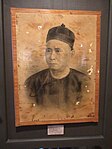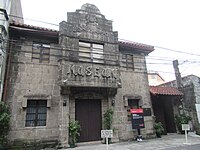
Canadian whisky is a type of whisky produced in Canada. Most Canadian whiskies are blended multi-grain liquors containing a large percentage of corn spirits, and are typically lighter and smoother than other whisky styles. When Canadian distillers began adding small amounts of highly-flavourful rye grain to their mashes, people began demanding this new rye-flavoured whisky, referring to it simply as "rye". Today, as for the past two centuries, the terms "rye whisky" and "Canadian whisky" are used interchangeably in Canada and refer to exactly the same product, which generally is made with only a small amount of rye grain.

Liquor or distilled beverages are alcoholic drinks produced by the distillation of grains, fruits, vegetables, or sugar that have already gone through alcoholic fermentation. Other terms for liquor include spirit, spirituous liquor or hard liquor. While the word liquor ordinarily refers to distilled alcoholic spirits rather than beverages produced by fermentation alone, it can sometimes be used more broadly to refer to any alcoholic beverage.

Advocaat or advocatenborrel is a traditional Dutch alcoholic beverage made from eggs, sugar, and brandy. The rich and creamy drink has a smooth, custard-like consistency. The typical alcohol content is generally between 14% and 20% ABV. Its contents may be a blend of egg yolks, aromatic spirits, sugar or honey, brandy, vanilla, and sometimes cream. Notable makers of advocaat include Warninks, Bols, Darna Ovo Liker, DeKuyper, and Verpoorten.
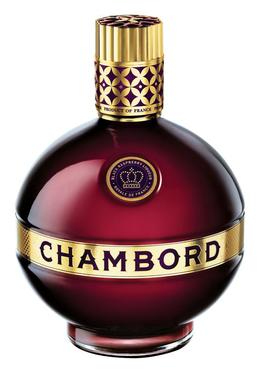
Chambord is a 16.5% abv raspberry liqueur modelled after a liqueur produced in the Loire Valley of France during the late 17th century. The Chambord product brand has been owned and produced by the Brown-Forman Corporation since 2006.
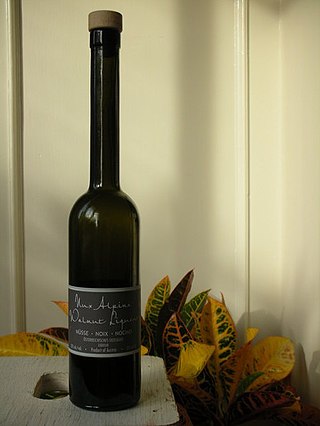
Nocino is a dark brown liqueur from the Emilia-Romagna region of Italy. It is made from unripe green walnuts. The walnuts and the liquor are handled using ceramic or wooden tools and placed in an alcoholic base. After steeping in spirit, the walnuts are removed and the alcohol is mixed with simple syrup. Nocino has an aromatic but bittersweet flavor. It may be homemade; villages and even individual families often have their own recipes, including different additions like cinnamon, juniper berries, lemon or orange zest, vanilla pods, coffee beans, or clove. The spices are added lightly, to avoid overpowering the flavour of the walnuts. A classic base consists of vodka. Nocino is also available commercially in bottled form. Commercially available nocino is typically 40 percent alcohol by volume, or 80 proof.

Taiwan Tobacco and Liquor Corporation, is a state-owned manufacturer and distributor of cigarettes and alcohol, and also formerly a state-sanctioned alcohol beverage brewing and retailing monopoly, in Taiwan. Its most famous product is Taiwan Beer. Other products include wine, Japanese-style liqueurs, Chinese herb liqueurs, and various distilled spirits.
The Polmos Łańcut distillery is one of the oldest producers of liquors and liqueurs in Poland. A small amount of the distillery's output is exported to Belgium, the Netherlands, France, Great Britain, Germany, Italy, and the United States.

A microdistillery is a small, often boutique-style distillery established to produce beverage grade spirit alcohol in relatively small quantities, usually done in single batches. While the term is most commonly used in the United States, micro-distilleries have been established in Europe for many years, either as small cognac distilleries supplying the larger cognac houses, or as distilleries of single malt whisky originally produced for the blended Scotch whisky market, but whose products are now sold as niche single malt brands. The more recent development of micro-distilleries can now also be seen in locations as diverse as London, Switzerland, and South Africa.

Tanduay Distillers, Inc. is a Philippine alcoholic beverage company founded in 1854. It is a subsidiary of LT Group, a conglomerate owned by Filipino business magnate Lucio Tan. As of 2021, it is the world's largest rum brand.

Korn, also known as Kornbrand or Kornbranntwein, is a German colorless distilled beverage produced from fermented cereal grain seed. The production of Korn uses only five grains: most of the production is based on rye or wheat; barley is mainly used to obtain the required malt for the brewing process; oats and buckwheat are rarely used. The addition of food colorings, flavorings, or sweeteners is not permitted. Korn is distilled to lower alcoholic proofs and less rigorously filtered than vodka, which leaves more of the cereal grain flavor in the finished spirit.

Destilería Serrallés is a rum producer located in Ponce, Puerto Rico, and best known for its Don Q rum brand. The company is Puerto Rico's oldest family-owned company and has revenues of over 100 million dollars. In 2011, it was responsible for pumping over $300 million annually into the Puerto Rican economy from the sale of its rums in the United States mainland alone.
Lambanóg is a traditional Filipino distilled palm liquor. It is an alcoholic liquor made from the distillation of naturally fermented sap (tubâ) from palm trees such as sugar palm, coconut, or nipa. Lambanog is well-known for having a strong alcohol concentration and can be used as a base liquor for various flavored spirits and cocktail creations. The most popular variety is the coconut lambanog which is commonly described as "coconut vodka" due to its clear to milky white color and high alcohol content. It originates from Luzon and the Visayas Islands. During the Spanish colonial period, it was also known as vino de coco in Spanish. It is particularly potent, having a typical alcohol content of 80 to 90 proof after a single distillation; this may go as high as 166 proof after the second distillation.
Travellers Liquors Limited is a distiller based in Belize. The company produces a variety of different liquors, specializing in aged rum.
Distilleries in Canada are distillers of various alcoholic distilled beverages (spirits) such as whisky, rum, vodka, brandy, gin, etc. in the country of Canada.

Sazerac Company, Inc. is a privately held American alcoholic beverage company headquartered in Metairie in the metropolitan area of New Orleans, Louisiana, but with its principal office in Louisville, Kentucky. The company is owned by billionaire William Goldring and his family. As of 2017, it operated nine distilleries, had 2,000 employees, and operated in 112 countries. It is one of the two largest spirits companies in the United States, with annual revenue of about $1 billion made from selling about 300 beverage brands.
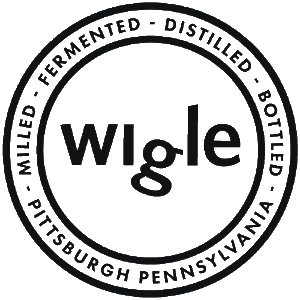
Wigle Whiskey is an artisan small batch whiskey distillery in the Strip District neighborhood of Pittsburgh. Wigle Whiskeys are the flagship products of Wigle Whiskey, which is entirely family owned and operated.

The production of distilled spirits in New Jersey has not been a large industry in the state. Strict alcoholic beverage control laws in place during and after Prohibition (1919–1933) prevented the industry from growing for almost a century. In 2013, the state passed a law creating a craft distillery license. and issued the first new distillery license since Prohibition to Jersey Artisan Distilling.

Italicus Rosolio di Bergamotto is a bergamot rosolio manufactured in Italy. The liqueur uses bergamot from Calabria and citrons from Sicily, along with Italian flower varieties. Italicus was created by an Italian bartender, Giuseppe Gallo, using a family recipe. He launched the spirit commercially in September 2016.
Calendar girls in the Philippines are known as women featured in promotional calendars mainly produced by liquor brands like Ginebra and Tanduay. These calendars typically showcase prominent female celebrities including actresses, beauty queens, and models. They serve as effective marketing tools through the use of glamorous, bold and often sexy images of women to attract consumer attention while promoting their brands.


